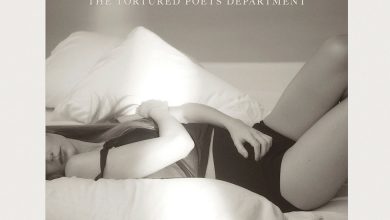Proceeds From Rare Treasures Sold at Auction Help Steady Jewish History Museum

In June, the shoe designer and entrepreneur Stuart Weitzman sold the world’s most expensive coin, the world’s most expensive postage stamp and a block of four stamps with — oops! — the airplane printed upside down, all for more than $32 million.
In November, he decided what to do with the money. He is giving all of his proceeds to the National Museum of American Jewish History, a Smithsonian-affiliated institution in Philadelphia that recently emerged from bankruptcy.
For the museum — whose collection includes the piano on which Irving Berlin wrote “Alexander’s Ragtime Band” and one of Albert Einstein’s pipes — Weitzman’s money is more than a lifeline. The museum will spend $10 million to buy its building, which had been sold to a former trustee’s family and leased back for $1,000 a month.
The rest will go toward an endowment. Weitzman said the result would be that the museum could operate “debt-free and rent-free, so everything it pays attention to will be for itself and not for trying to stay afloat.”
The museum is responding by changing its name to the Weitzman National Museum of American Jewish History. It will make the new name official on Monday, the last day of Hanukkah, although Misha Galperin, the museum’s chief executive, shared the news early in a post on the eJewish Philanthropy website.
Weitzman, who turned 80 in July, said before the auction that he planned to give away the proceeds. He described the sale as a form of estate planning, unloading one-of-a-kind items he had collected over 20 years that he believed would have enduring value. But he said his children did not want to inherit them and, as he put it, “No one takes a U-Haul to the cemetery.”
The museum had been preoccupied with financial problems for the past decade — since it completed its $150 million building on Independence Mall, a short walk from Independence Hall and the Liberty Bell Center. For the five-story building, the museum took out a $35 million construction loan, Galperin said. The museum had counted on fund-raising to pay it off, he said, but as the financial crisis of 2008 deepened, donations slowed.
“For the next 10 years, they were servicing that debt, running out of cash,” said Galperin, who was brought in as a consultant in 2019 and became chief executive last year. “The museum was in serious financial trouble.”
Roughly $30 million in debt at the beginning of 2020, it filed for bankruptcy on March 1, before the pandemic hit. Then the museum closed down. “No revenue,” he said, “and because we were in bankruptcy, we weren’t eligible for federal assistance under PPP,” the federal paycheck protection program. The museum laid off 25 employees, two-thirds of its staff.
It emerged from bankruptcy in September with a plan that essentially eliminated the debt. Some $17 million was owed to banks. That amount was reduced to $10.5 million after negotiations and was paid off by the deal for the building and some donations. Another $14 million was owed to a group of current and past supporters, among them the philanthropist Sidney Kimmel. Galperin said they forgave that money.
Galperin said that Mitchell Morgan, whose family bought the building and leased it back, had given the museum three and a half years to devise a long-term plan, a timeline that Galperin called “enough of a runway to figure out what to do next.”
Weitzman was already acquainted with the museum before Galperin approached him in September. Weitzman had donated $1 million in 2018 for a gallery about Jews who settled in American in the 17th century.
Weitzman said Galperin was straightforward, mentioning what Weitzman had said about giving away the money from the auction. “He said, ‘This is our goal. We want our building back. We don’t want to get kicked out in a couple of years. We need someone or some people to secure our future,’” Weitzman recalled. “And that’s what I did.”



